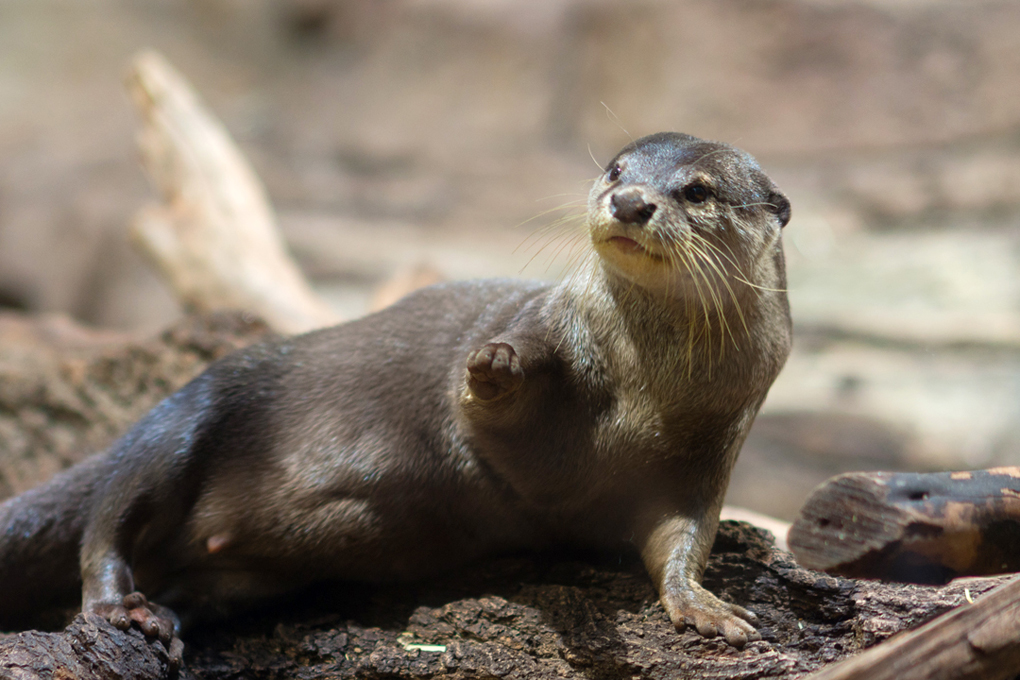Amblonyx cinereus
Fast Facts
- They are smallest species of river otter.
- These otters are very social, living in family groups of up to 12 individuals.
- They have opposable thumbs.
- They are highly intelligent: some have even been trained to catch fish for people!


Range
Southeast Asia, Indonesia, the Philippines, and sometimes India & China

Habitat
Freshwater rivers, mangroves, coastal areas, and rice paddies

Size
Up to 2 feet long, less than 10 pounds

Nutrition
Fish, crustaceans, mollusks, sometimes insects, small reptiles, and amphibians
Characteristics
Like other otters, Asian small-clawed otters have dense, waterproof fur, as well as whiskers to detect water movement and potential prey. Their fur is dark brown on the top and a sandy cream shade on their bellies. They may also have lighter markings on their faces or throats. Their tails are long, nearly half of their body length. Unlike other otters, Asian small-clawed otters have partially webbed feet and shorter claws than most otters. The claws do not extend beyond their paw pads, which gives them greater dexterity.
Behavior
Since they have opposable thumbs and incomplete webbing, Asian small-clawed otters will use their feet to manipulate objects and find food. They can dig through the sand or rocky riverbeds and break open shells. If the otter cannot break shells by hand, it will leave the shell in the sun to dry out. This species is social and vocal: biologists have recorded at least 12 types of vocalization from this species. They also communicate through scent. Asian small-clawed otters can determine another individual otter’s sex, age, and identity from scent markings!
Reproduction
Asian small-clawed otters reach sexual maturity at about 1.5 years and generally stay with one mate for most of their lives. Females gestate for about 68-72 days. They can have up to two litters in a year, usually about 8-9 months apart. Litters can have anywhere from 1-6 pups. Males will help dig a nest in muddy banks and will gather food with other members of the family group once the pups are born. Pups can leave the den after 10 weeks and swim independently when they are around three months old.

